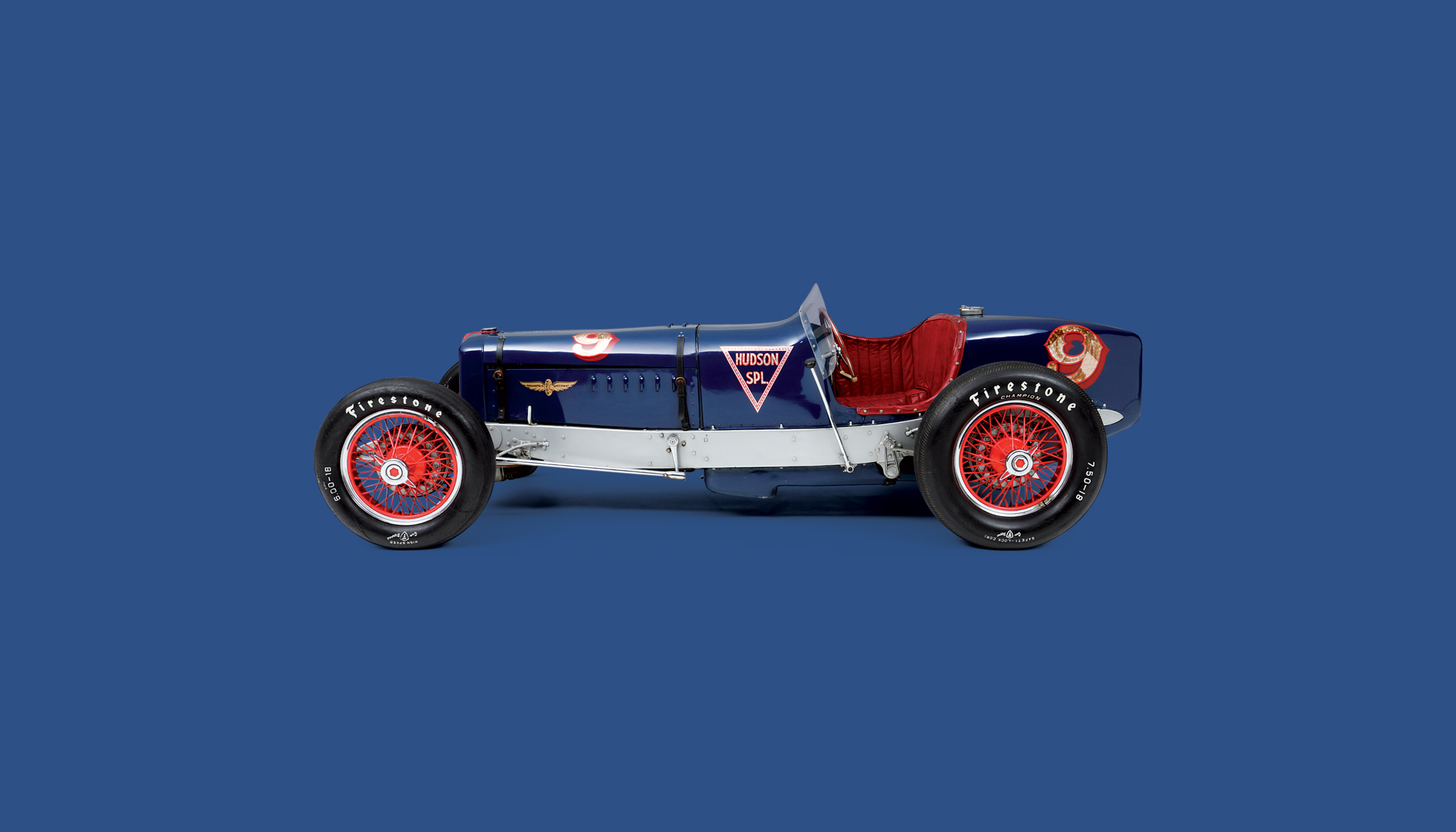Hudson Straight Eight Indianapolis
The 500 Miles of Indianapolis, better known as the ‘Indy 500’, is the most significant motorsports event in the United States.
The race was first organised in 1911 and is run on an oval track: the Indianapolis Motor Speedway. An interesting point to note is that the cars race anti-clockwise.
In the early years there were many European entries in the race, but European racing cars were built for sinuous circuits. As a result, the Indy 500 soon became a predominantly American event. The costs involved in participation gradually increased, partly due to the fact that cars were being enhanced with more powerful engines.
In 1930 the organisers therefore decided that the cars had to be equipped with production engines and this proved to be the event’s salvation. A race car could now be built for 1,500 dollars instead of ten times the amount, and this decision brought the major motor manufacturers back to the Indy 500.
This Hudson has a 3.8-litre, eight-cylinder engine and was 80 km/h faster than the standard sedan on which it was based. The car was built for the 1933 race, which was to end in tragedy; many cars crashed and three participants and two mechanics were killed.

